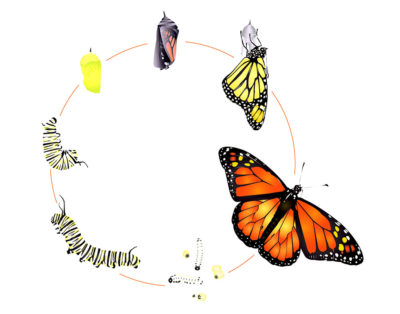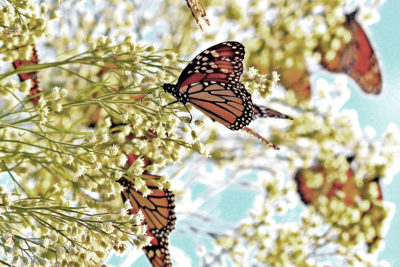 Jerry Coyne, in his new book entitled Why Evolution is True, conveniently overlooks any reference to the butterfly, as does Darwin-Discovering the Tree of Life by Niles Eldridge.
Jerry Coyne, in his new book entitled Why Evolution is True, conveniently overlooks any reference to the butterfly, as does Darwin-Discovering the Tree of Life by Niles Eldridge.
Even the California-sponsored website “Understanding Evolution,” skirts around the mysterious transformation of the butterfly known as metamorphosis – a butterfly nightmare.
Depictions of mystical butterfly symbols embellished Egyptian, Chinese, and Greeks cultural expressions for over 3,500 years. Why is the evolution industry silent on butterfly metamorphosis?
The answer is simple. Identifying a natural selection process for metamorphosis escapes a logical or, more importantly, a scientific explanation. The same DNA is in all four life cycles; the egg, the caterpillar (larva), the cocoon (pupa), and the adult butterfly (pictured right). Metamorphosis, to the theory of Evolution, is a spectacular scientific enigma.
Genetics
“Evolution is the process, according to Understanding Evolution, “by which modern organisms have descended from ancient ancestors. Fundamental to the process is genetic variation.” As the WIKIPEDIA Evolution page explains –
“An individual organism’s phenotype results from both its genotype and the influence from the environment it has lived in.”
Genetics determines the phenotype; it was thought. Francis Frick, British molecular biologist, biophysicist, and neuroscientist, called this the gene-centric theory of evolution, the “central dogma of molecular biology.” In theory, the form of a species, the phenotype, is determined by genetics (DNA), the genotype.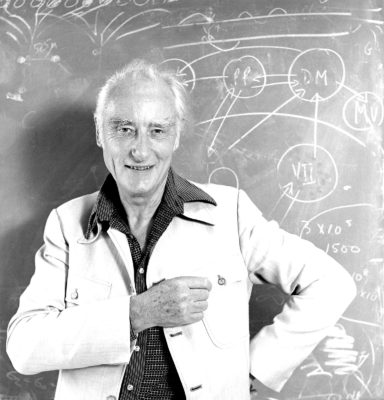
The butterfly, however, defies Frick’s central dogma theory. During metamorphosis, the same genetics (DNA) produces different phenotypes. The evidence is clear: DNA does not exclusively control life. Evidence from the butterfly undermines the once-popular central dogma theory of evolution, the foundation of the Modern Synthesis (20th century) theory of evolution.
This gene-phenotype butterfly nightmare, more amazingly, is ubiquitous throughout nature. As Italian geneticist, Giuseppe Sermonti, points out –
“Examples of highly divergent forms possessing the same DNA are so conspicuous and so numerous that the marvel is that they have attracted so little attention.”
Metamorphosis in the butterfly involves a “complete metamorphosis.” This process involves four specific developmental stages, each with its particular morphology and function. Explaining further, Sermonti notes –
“What we call metamorphosis is not a change in form. Once the pupa, or chrysalis, the stage is reached, the caterpillar starts emptying itself: its organs dissolve, and its outer covering is shed. Only certain groups of cells, called marginal disks, remain vital. From these cells develop all the structures of the adult.”
The larva of the butterfly not only changes form but dissolves before rebuilding into the structure of a butterfly—a new life-form. From the same DNA arises an entirely different phenotype. According to Sermonti, the same DNA, then, plays various roles –
“DNA may lend itself to such diverse forms, but it is not the DNA that imposes the blueprint.”
Epigenetics
The same DNA in different life-forms is called “genomic equivalence,” meaning that the control of the cell is beyond the DNA, or “epigenetic.” From a more comprehensive perspective, Brian Goodwin (pictured right), a Canadian 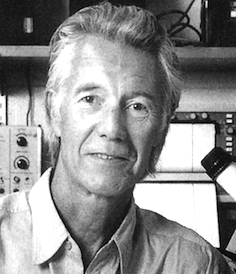 developmental biologist and principal founder of theoretical biology, argues –
developmental biologist and principal founder of theoretical biology, argues –
“While genes are responsible for determining which molecules an organism can produce, the molecular composition of organisms does not, in general, determine their form.”
H. Frederik Nijhout of the Department of Biology at Duke University, a critic of Crick’s central dogma, arrived at the same conclusion –
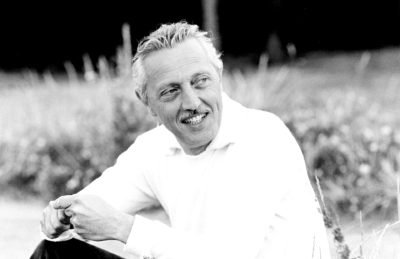 “The only strictly correct view of the function of genes [DNA] is that they supply cells, and ultimately organisms, with chemical materials.”
“The only strictly correct view of the function of genes [DNA] is that they supply cells, and ultimately organisms, with chemical materials.”
The butterfly nightmare stems from the belief in DNA mutations, plus natural selection equals biological evolution. No wonder French geneticist, discoverer of the Down syndrome, Jérôme Lejeune, cut to the chase –
“There is no theory of evolution.”
Darwin’s dilemma intensifies.
Genesis
The association between genetics and butterfly metamorphosis, while incompatible with the twentieth-century versions of evolution, is compatible with the Genesis account written by Moses.
William Thomson Kelvin (1824-1907) (pictured right), the English physicist who founded the first and second laws of thermodynamics and unified modern physics, reasoned during the Scientific Revolution –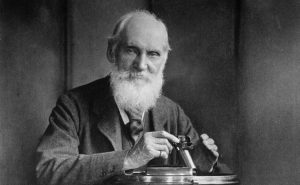
“Do not be afraid of being free thinkers. If you think strongly enough, you will be forced by science to believe in God, which is the foundation of all religions. You will find science not antagonistic but helpful to religion.”
Government-funded evolution education should now render service to humanity by addressing the blatant contradictions between the theory of evolution and science – starting, perhaps with the butterfly.
Refer to the Glossary for the definition of terms and to Understanding Evolution to gain insights into understanding evolution.
2020 Update
Since 2010, no agencies have funded investigations into the evolution of metamorphosis. In 2012, the journal Scientific America published “How Did Insect Metamorphosis Evolve?” written by Ferris Jabr. The article was subtitled “The evolution of metamorphosis remains somewhat mysterious, but biologists have gathered enough evidence to plausibly explain its origins.” Jabr concludes –
“Perhaps 280 million years ago, through a chance mutation, some pro-nymphs failed to absorb all the yolk in their eggs, leaving a precious resource unused.”
No published scientific evidence has validated evolution as the driving force giving rise to metamorphosis in the butterfly since 2010.

